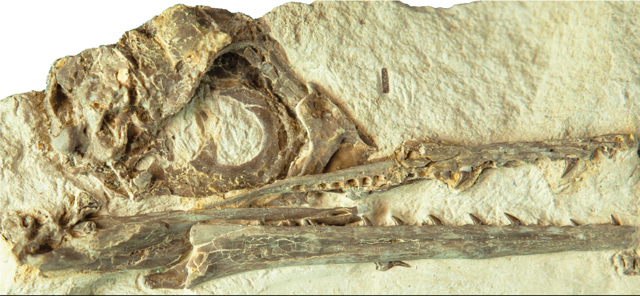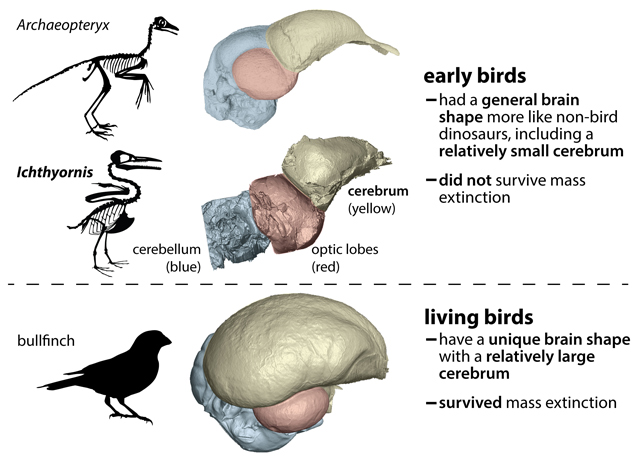Ichthyornis Skull New Research
An Ichthyornis skull study sheds light on the evolution of brains within the Avialae.
Living birds are very diverse, globally distributed and occupy a huge number of ecological niches. Today, there are more species of birds than mammals, they are certainly extremely successful and they are the only members of the Dinosauria to have survived the end-Cretaceous extinction event. A new study published in Science Advances suggests the unique brain shape of the ancestors of modern birds may have helped them survive the mass extinction that wiped out all the other dinosaurs.

Studying a Fossil Skull
A beautifully preserved skull and jaws of the toothed stem bird (Avialae) Ichthyornis (I. dispar) was subjected to x-ray computed tomography at the University of Texas at Austin so that researchers could gain an better understanding of the shape of the brain of this Late Cretaceous bird.
Brain morphology in Mesozoic birds is very poorly understood. Only two other Mesozoic birds have had their brains mapped – Archaeopteryx lithographica from the Late Jurassic of Germany and the probable enantiornithine Cerebavis cenomanica from the Volgograd Region of Russia which is known from the Middle Cenomanian of the Cretaceous.

With the CT-imaging data, the researchers used the skull of Ichthyornis like a mould to create a three-dimensional replica of the brain called an endocast. They then compared that endocast with ones created for living birds and more distantly related, non-avian members of the Dinosauria.
To read a blog post from 2018 about an earlier study of an Ichthyornis skull that provided new information on the evolution of the beak in birds: The First Beak Under the Noses of Scientists.
Ichthyornis Skull Study
The scientists found that the brain of Ichthyornis had more in common with non-avian dinosaurs than it did with living birds. Specifically, the cerebral hemispheres – where higher cognitive functions such as speech, thought and emotion occur in humans – are much bigger in living birds than in Ichthyornis. That pattern suggests that these functions could be connected to surviving the mass extinction.
Lead author of the study, PhD student Christopher Torres (The University of Texas at Austin), commented:
“Living birds have brains more complex than any known animals except mammals. This new fossil finally lets us test the idea that those brains played a major role in their survival.”

Co-author of the study Julia Clarke, a professor at the University of Texas Jackson School of Geosciences added:
“Ichthyornis is key to unravelling that mystery. This fossil helps bring us much closer to answering some persistent questions concerning living birds and their survivorship among dinosaurs.”
To read a related article published in 2013, that suggested that dinosaur brains were pre-programmed to permit complicated co-ordinated moves, helpful when evolving powered flight : Study Shows Dinosaur Brains Pre-programmed for Flight.
The scientific paper: “Bird neurocranial and body mass evolution across the end-Cretaceous mass extinction: The avian brain shape left other dinosaurs behind” by Christopher R. Torres, Mark A. Norell and Julia A. Clarke published in Science Advances.
Visit the Everything Dinosaur website: Dinosaur Toys and Models.

